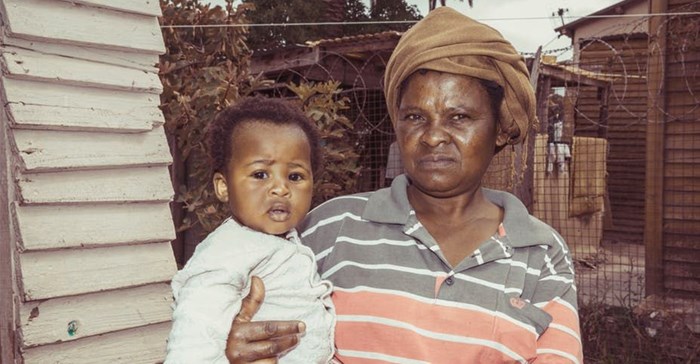
Caregivers need to be educated on the importance of routine nutrition screening and interventions. Photo: Shutterstock
Malnourished children are more likely to contract diseases such as diarrhoea, measles and other infections. These can lead to death, as well as a range of permanent mental and physical shortfalls.
In 1999 the World Health Organisation developed a strategy to tackle this global challenge. The aim was to improve the health and development of children under the age of five.
In line with this strategy South Africa’s Health Department introduced a system in 2011 to improve the way it measured children’s growth by including height measurements and recording their nutritional status. It distributed a booklet to clinics aimed at helping health care workers keep a track record of children’s health and development status.
Our study looked at South Africa’s response to the Road to Health Booklet to see how well it was being used by health care workers and caregivers. We conducted the survey in 140 health care facilities in South Africa’s Western Cape province.
If used properly the booklet can help health care workers identify children who are at risk of becoming undernourished or overweight at an early stage.
But we found that it was not being used properly. Health care workers weren’t recording some key health statistics. This was either because they didn’t understand the value of the information or because they didn’t have the time.
In addition, we found that health care workers weren’t explaining important things that caregivers could do to improve their children’s health. This included things like bringing their children to the clinic for regular growth monitoring and advising the caregivers about the importance breastfeeding and complementary feeding for their nutritional value.
The Road to Health booklet is similar to growth monitoring tools and development assessments in countries around the world has the potential to help improve children’s lives. But the government must ensure health care workers understand the importance of collecting the relevant information. And that they transfer the correct messages to caregivers.
Recording the data
Our study had three parts. We evaluated 2400 children’s booklets to see how well sections were completed. We also sat in on the consultations between caregivers and health care workers and we asked both groups to complete questionnaires about their knowledge, attitudes and practices.
Our findings on collecting the data was that information was missing from the booklets. For example, whether children had been dewormed or not was not filled in by half of the health care workers. There was other information missing too.
The health care workers offered several explanations for not completing the booklets correctly.
Some did not have time. At other facilities there were staff shortages which had an impact on the running of the facility. And there was also a challenge with equipment which was either not working or not available. In some clinics, for example, the weighing scales were inaccurate.
Poor advice
There were several irregularities when it came to advising caregivers.
Many of the health care workers couldn’t interpret the information they were gathering. While nearly all the children were weighed, more than half of the health care workers didn’t explain the children’s growth to the caregivers.
About a third of the health care workers couldn’t correctly identify underweight children or those suffering from severe weight loss. And only half could do so for stunting (when a child is short for their age). This is because they didn’t know how to perform and interpret the measurements.
Stunting is a serious problem in South Africa and can disadvantage children for the rest of their lives. It’s critical for health care workers to identify it early and to give advice about changing a child’s diet.
Most health care workers knew the correct regimes for vitamin A supplementation and deworming. As a result most of the children had their immunisation and vitamin A supplements adequately recorded in the booklets.
Although the health care workers received training, some were not clear on the purpose and importance of the measurements and how they determined a child’s health. This shows that more resources need to be channelled into health care worker training so that they are able to counsel caregivers better on the importance of nutrition.
Fixing the system
There are several other elements that need to be fixed so that the system can run efficiently.
Accurate scales and measurement tools need to be provided to ensure that children are measured properly.
In addition, community health care workers need to be mobilised to strengthen awareness in the community.
 And lastly, caregivers need to be educated on the importance of routine nutrition screening and interventions. This will give them a better understanding of the programme’s benefits which in turn will empower them to ask more questions and get more information.
And lastly, caregivers need to be educated on the importance of routine nutrition screening and interventions. This will give them a better understanding of the programme’s benefits which in turn will empower them to ask more questions and get more information.
This article was originally published on The Conversation. Read the original article.














































